Miles Davis
 From Nwe
From Nwe
Miles Dewey Davis III (May 26, 1926 – September 28, 1991) was one of the most distinguished jazz musicians of the latter half of the twentieth century. A trumpeter, band leader and composer, Davis was at the forefront of almost every major development in jazz from World War II to the 1990s. He played on some early bebop records and recorded the first cool jazz records. He was partially responsible for the development of modal jazz, and jazz fusion arose from his work with other musicians in the late 1960s and early 1970s. Free jazz was the only post-war jazz style not significantly influenced by Davis, although some musicians from his bands later pursued this style. His sound recordings, along with the live performances of his many influential bands, were vital in jazz's acceptance as music with lasting artistic value. A popularizer as well as an innovator, Davis became famous for his languid, melodic style and his laconic, and at times confrontational, personality. As an increasingly well-paid and fashionably-dressed jazz musician, Davis was also a symbol of jazz music's commercial potential.
Davis was posthumously inducted into the Rock and Roll Hall of Fame on March 13, 2006. He has also been inducted into the St. Louis Walk of Fame, and the Big Band and Jazz Hall of Fame. There are plans to make a Biographical film or biopic about Davis starring Don Cheadle.
Life
Early life (1926 to 1945)
Miles Dewey Davis was born into a relatively wealthy African-American family living in Alton, Illinois. His father, Miles Henry Davis, was a dentist, and in 1927 the family moved to East St. Louis. They also owned a substantial ranch, and Davis learned to ride horses as a boy. The horse's name was Angelo Minny.
Davis's mother, Cleota Henry Davis, wanted Davis to learn the violin—she was a capable blues pianist, but kept this hidden from her son, feeling that black music was not sufficiently genteel. He did not start learning to play seriously until the age of thirteen. However, his father gave him a new trumpet and arranged lessons with local trumpeter Elwood Buchanan, who happened to be a patient of his, when he was nine. Against the fashion of the time, Buchanan stressed the importance of playing without vibrato, and Davis would carry his clear signature tone throughout his career. Buchanan was credited with slapping Miles' knuckles with a ruler every time that he started using heavy vibrato.
Clark Terry was another important early influence and friend of Davis's. By the age of sixteen, Davis was a member of the musician's union and working professionally when not at high school. At seventeen, he spent a year playing in band leader Eddie Randle's "Blue Devils." During this time, Sonny Stitt tried to persuade him to join the Tiny Bradshaw band, then passing through town, but Cleota insisted that he finish his final year of high school.
In 1944, the Billy Eckstine band visited St. Louis. Dizzy Gillespie and Charlie Parker were members of the band, and Davis was taken on as third trumpet for a couple of weeks because of the illness of Buddy Anderson. When Eckstine's band left Davis behind to complete the tour, the trumpeter's parents were still keen for him to continue formal academic studies.
Bebop and the Birth of the Cool (1944 to 1955)
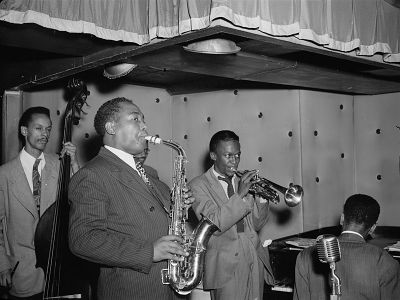
In 1944 Davis moved to New York City, to take up a scholarship at the Juilliard School of Music. In reality, he neglected his studies and immediately looked for Charlie Parker. His first recordings were made in 1945, and he was soon a member of Parker's quintet, appearing on many of Parker's seminal bebop recordings for the Savoy Records and Dial Records labels. Davis's style on trumpet was already distinctive by this point, but as a soloist he lacked the confidence and virtuosity of his mentors, and was known to play throttled notes (a trademark of Davis's) during his solos.
By 1948, he had served his apprenticeship as a sideman, both on stage and record, and a recording career of his own was beginning to blossom. Davis began to work with a nonet that featured then-unusual instrumentation, such as the French horn and tuba. The nonet featured a young Gerry Mulligan and Lee Konitz. After some gigs at New York's Royal Roost, Davis was signed by Capitol Records. The nonet released several singles in 1949 and 1950, featuring arrangements by Gil Evans, Gerry Mulligan, and John Lewis. This began his collaboration with Evans, with whom he would collaborate on many of his major works over the next twenty years. The sides saw only limited release until 1957, when eleven of the twelve were released as the album Birth of the Cool (more recent issues collect all twelve sides). In 1949 he visited Europe for the first time and performed at the Paris Jazz Festival in May.
Between 1950 and 1955, Davis mainly recorded as a leader for Prestige Records and Blue Note records in a variety of small group settings. Sidemen included Sonny Rollins, John Lewis (pianist)|John Lewis]], Kenny Clarke, Jackie McLean, Art Blakey, Horace Silver, Thelonious Monk, J. J. Johnson, Percy Heath, Milt Jackson, and Charles Mingus. Davis was influenced at around this time by pianist Ahmad Jamal, whose sparse style contrasted with the "busy" sound of bebop.
Playing in the jazz clubs of New York, Davis was in frequent contact with users and dealers of recreational drugs, and by 1950, in common with many of his contemporaries, he had developed a serious heroin addiction.
After overcoming his heroin addiction ("cold turkey," at his Father's ranch) Davis made a series of important recordings for Prestige in 1954, later collected on albums including Bags' Groove, Miles Davis and the Modern Jazz Giants, and Walkin'. At this time he started to use the Harmon mute to darken and subdue the timbre of his trumpet, and this muted trumpet tone was to be associated with Davis for the rest of his career.
However, the 1954 recordings were not released immediately, and the recovery of his popularity with the jazz public and critics was not until July 1955, when he played a legendary solo on Monk's "'Round Midnight" at the Newport Jazz Festival. This performance thrust Davis back into the jazz spotlight, leading to George Avakian signing Davis to Columbia and the formation of his first quintet.
First great quintet and sextet (1955 to 1958)
In 1955, Davis formed the first incarnation of the renowned Miles Davis Quintet. This band featured John Coltrane (tenor saxophone), Red Garland (piano), Paul Chambers (double bass), and Philly Joe Jones (drums). Musically, the band picked up where Davis's late 1940s sessions had left off. Eschewing the rhythmic and harmonic complexity of the then-prevalent bebop, Davis was allowed the space to play long, legato, and essentially melodic lines in which he would begin to explore modal music. Davis still admired Ahmad Jamal, and the quintet's music reflects his influence as well, in the choice of repertoire and in Davis's directives to Garland.
The first recordings of this group were made for Columbia Records in 1955, released on 'Round About Midnight. Davis was still under contract to Prestige, but had an agreement that he could make recordings for subsequent releases using his new label. His final recordings for Prestige were the product of two days of recording in 1956, released as Relaxin' with the Miles Davis Quintet, Steamin' with the Miles Davis Quintet, Workin' with the Miles Davis Quintet, and Cookin' with the Miles Davis Quintet.
Though today it is often regarded as one of the greatest groups in jazz history. The quintet was never stable; several of the other members used heroin, and the Miles Davis Quintet disbanded in early 1957.
Also, in 1957, Davis traveled to France to compose the score to Louis Malle's Ascenseur pour l'Échafaud a French Nouvelle Vague, or New Wave, suspense movie. He recorded the entire soundtrack with the aid of French session musicians Barney Wilen, Pierre Michelot and René Urtreger, and famous American drummer Kenny Clarke.
In 1958, the quintet reformed as a sextet, with the addition of Julian "Cannonball" Adderley on alto saxophone, and recorded Milestones. Musically, it encompassed both the past and the future of jazz. Davis showed that he could play both blues and bebop (ably assisted by Coltrane), but the centerpiece is the title track, a Davis composition centered on the Dorian and Aeolian modes and featuring the free improvisatory modal style that Davis would make his own.
Recordings with Gil Evans (1957 to 1963)
In the late 1950s and early 1960s, Davis recorded a series of albums with Gil Evans, often playing flugelhorn as well as trumpet. The first, Miles Ahead (1957), showcased his playing with a jazz big band and a horn section beautifully arranged by Evans. Tunes included Dave Brubeck's "The Duke," as well as Léo Delibes's "The Maids Of Cadiz," the first piece of European classical music Davis had recorded. Another important feature of the album was the innovative use of editing to join the tracks together, turning each side of the album into a seamless piece of music.
In Davis and Evans's Porgy and Bess, a 1958 album of arrangement of pieces from George Gershwin's Porgy and Bess, the framework of the Gershwin songs provided ample space for Davis to improvise, showing his mastery of variations and expansions on the original themes, as well as his original melodic ideas. Davis named the album one of his own favorites.
Sketches of Spain (1959 to 1960) featured tunes by contemporary Spanish composer Joaquin Rodrigo and also Manuel de Falla, as well as Gil Evans originals with a Spanish theme. Miles Davis at Carnegie Hall (1961) includes Rodrigo's Concierto de Aranjuez, along with other tunes recorded at a concert with an orchestra under Evans's direction.
Sessions in 1962 and 1963 resulted in the album Quiet Nights, a short collection of bossa nova tunes which was released against the wishes of both Evans and Davis. That was the last time that the two created a full album again, although Evans remained one of Davis' most important musical contributors and friends. Towards the end of his life and after Evans' death, Davis once noted that "Gil was my best friend."
Kind of Blue (1959 to 1964)
After recording Milestones, Garland and Jones were replaced by Bill Evans and Jimmy Cobb. Evans had a harmonically sophisticated approach. Evans's stay in the group was relatively brief, and he departed late in 1958, replaced by Wynton Kellywho had a lot more swing and verve.
In March and April 1959, Davis re-entered the studio with his working sextet and Bill Evans to record what is widely considered his magnum opus, Kind of Blue. The album was planned around Evans's piano style. It was also influenced by concepts that Evans had learned while working with George Russell on the earliest recordings of modal jazz and passed on to the sextet. Kelly only played on "Freddie Freeloader," and was not present at the April session. "So What" and "All Blues" had been played by the sextet at performances prior to the recording sessions, but for the other three compositions, Davis and Evans prepared skeletal harmonic frameworks which the other musicians saw for the first time on the day of recording, in order to generate a fresh and spontaneous improvisational approach. The resulting album has proven to be a huge influence on other musicians. According to the RIAA, Kind of Blue is the best-selling jazz album of all time.
John Coltrane, who had been eager to form his own group, was convinced by Davis to play with the group on one final European tour in the spring of 1960, where they were always received royally. He then departed to form his classic quartet, although he returned for some of the tracks on the 1961 album Someday My Prince Will Come. Davis tried various replacement saxophonists, including Sonny Stitt and Hank Mobley. The quintet with Hank Mobley was recorded in the studio and on several live engagements at Carnegie Hall and the Black Hawk supper club in San Francisco. Stitt's playing with the group is found on the Live in Stockholm album.
In 1963, Davis's long-time rhythm section of Kelly, Chambers, and Cobb departed. He quickly got to work putting together a new group, including tenor saxophonist George Coleman and bassist Ron Carter. Davis, Coleman, Carter, and a few other musicians recorded half an album in the spring of 1963. A few weeks later, drummer Tony Williams and pianist Herbie Hancock joined the group, and soon thereafter Davis, Coleman and the young rhythm section recorded the rest of the Seven Steps to Heaven album.
The young rhythm section clicked very quickly with each other and the horns; the group's rapid evolution can be traced through the aforementioned studio album, In Europe (July 1963), My Funny Valentine, and Four and More (both February 1964). The group played essentially the same repertoire of bebop and standards that earlier Davis bands did, but tackled them with increasing structural and rhythmic freedom and (in the case of the up-tempo material) at breakneck speed.
Coleman left in the spring of 1964, to be replaced by avant-garde saxophonist Sam Rivers, on the suggestion of Tony Williams. Davis knew of Rivers's leanings toward free jazz, a genre which he disdained; he knew that Rivers was not the ideal replacement he was looking for. Rivers remained in the group only briefly, but was recorded live with the quintet in Japan; the group can be heard on In Tokyo (July 1964).
By the end of the summer, Davis had managed to convince Wayne Shorter to quit Art Blakey's Jazz Messengers, a reluctant decision because Shorter had become musical director of that group. Shorter's arrival completed the trumpeter's Second Great Quintet. Shorter became the principal composer of Miles's quintet, and some of his compositions of this era ("Footprints," "Nefertiti") are now standards. While on tour in Europe, the group quickly made their first official recording, Miles in Berlin (Fall 1964). On return to the United States later that year, Davis (at the urging of Jackie DeShannon) was instrumental in getting The Byrds signed to Columbia Records. This would foreshadow Davis's intense interest in rock music by the end of the decade.
Second great quintet (1964 to 1968)
By the time of E.S.P. (1965), the lineup (Davis's second great quintet, and the last of his acoustic bands) consisted of Wayne Shorter (saxophone), Herbie Hancock (piano), Ron Carter (bass), and Tony Williams (drums).
A two-night Chicago gig by this band in late 1965 is captured on the 8-CD set The Complete Live at The Plugged Nickel 1965, released in 1995. Unlike the group's studio albums, the live engagement shows the group still playing primarily standards and bebop tunes, albeit with a greater degree of freedom than in previous years.
This was followed by a series of strong studio recordings: Miles Smiles (1966), Sorcerer (1967), Nefertiti (1967), Miles in the Sky (1968), and Filles de Kilimanjaro (1968). The quintet's approach to improvisation came to be known as "time no changes" or "freebop," because while they retained a steady pulse, they abandoned the chord-change-based approach of bebop for a modal approach. The rhythm section became more free, able to change tempos and time signatures spontaneously. Through Nefertiti, the studio recordings consisted primarily of originals composed by Wayne Shorter, and to a lesser degree of compositions by the other sidemen. In 1967, the group began the unusual practice of playing their live concerts in continuous sets, with each tune flowing into the next and only the melody indicating any sort of demarcation; Davis's bands would continue to perform in this way until his retirement in 1975.
Miles in the Sky and Filles de Kilimanjaro, on which electric bass, electric piano and guitar were tentatively introduced on some tracks, clearly pointed the way to the subsequent fusion phase in Davis's output. Davis also began experimenting with more rock-oriented rhythms on these records, and by the time the second half of Filles de Kilimanjaro had been recorded, Dave Holland and Chick Corea had replaced Carter and Hancock in the working band, though both Carter and Hancock would contribute to future recording sessions. Davis soon began to take over the compositional duties of his sidemen.
Electric Miles
By the time In a Silent Way had been recorded in February 1969, Davis had augmented his standard quintet with additional players. Hancock and Joe Zawinul were brought in to assist Corea on electric keyboards, and the young guitarist John McLaughlin made the first of his many appearances with Miles at this time. By this point, Wayne Shorter was also doubling on soprano saxophone. After the recording of this album, Tony Williams left to form his group Lifetime and was replaced by Jack DeJohnette.
Six months later, an even larger group of musicians, including Jack DeJohnette, Airto Moreira, and Bennie Maupin, recorded the double LP Bitches Brew. These two records were the first truly successful amalgamations of jazz with rock music, laying the groundwork for the genre that would become known simply as "fusion."
During this period, Davis toured with the "lost quintet" of Shorter, Corea, Holland, and DeJohnette. Though Corea played electric piano and the group occasionally hinted at rock rhythms, the music was edgy, uncompromising post-bop that frequently spilled over into full-blown free jazz. The group's repertoire included material from Bitches Brew, In a Silent Way, the 1960s quintet albums, and an occasional standard.
Both Bitches Brew and In a Silent Way feature "extended" (more than 20 minutes each) compositions which were never actually "played straight through" by the musicians in the studio. Instead, Miles and producer Teo Macero selected musical motifs of various lengths from recorded extended improvisations and edited them together into a musical whole which only exists in the recorded version. Bitches Brew, in particular, is a case study in the use of electronic effects, multi-tracking, tape loops ,and other editing techniques. Both records, especially Bitches Brew, proved to be huge sellers for Davis, and he was accused of "selling out" by many of his former fans, while simultaneously attracting many new fans who listened to Davis alongside the more popular rock acts of the late 1960s.
Davis reached out to new audiences in other ways as well. Starting with Bitches Brew, Davis's albums began to often feature cover art much more in line with psychedelic or black power movements than with his earlier albums' art. He took significant cuts in his usual performing fees in order to open for rock groups like the Steve Miller Band, the Grateful Dead, and Santana. (Carlos Santana has stated that he should have opened concerts for Davis, rather than the other way around.) Several live albums were recorded during the early 1970s at such performances: It's About That Time (March 1970; Shorter's last appearance with the group), Black Beauty (April 1970; Steve Grossman replacing Shorter on saxophones), and At Fillmore (June 1970; Keith Jarrett joining the group as a second keyboardist). In contrast with the "lost quintet," the music on these albums is funkier and more rock-oriented, with relatively few free jazz tendencies. Corea began to rely heavily on effects like ring modulation, and Dave Holland shifted to the electric bass (having primarily played acoustic bass for the previous year).
By the time of Live-Evil (December 1970; Jarrett as the only keyboardist, Gary Bartz replacing Grossman on saxophones, and Michael Henderson replacing Holland on electric bass, Airto Moreira percussion), Davis's ensemble had transformed into a much more funk-oriented group. Davis began experimenting with wah-wah effects on his horn. The ensemble with Bartz, Jarrett, and Henderson, often referred to as the "Cellar Door band" (the live portions of Live-Evil were recorded at a club by that name), and is documented in the six CD Box Set "The Cellar Door Sessions" which was recorded over four nights in December of 1970.
1970s
The year 1970 saw Davis contribute extensively to the soundtrack of a documentary about the great African-American boxer Jack Johnson. Himself a devotee of boxing, Davis drew parallels between Johnson, whose career had been defined by the fruitless search for a Great White Hope to dethrone him, and Davis's own career, in which he felt the establishment had prevented him from receiving the acclaim and rewards that were due him. The resulting album, 1971's A Tribute to Jack Johnson, contained two long pieces that utilized the talents of many musicians, some of whom were not credited on the record, including the guitarists John McLaughlin and Sonny Sharrock. Working with producer Teo Macero, Davis created what many critics regard as his finest electric, rock-influenced album, though its use of editing and studio technology would be fully appreciated only upon the release of the five-CD The Complete Jack Johnson Sessions in 2003.
Davis refused to be confined by the expectations of his traditional audience or music critics, and continued to explore the possibilities of his new band. As he stated in his autobiography, he wanted to make music for the young Afro-American audience. On The Corner (1972) showed a seemingly effortless grasp of funk without sacrificing the rhythmic, melodic, and harmonic nuance that had been present throughout his career. The album also showed the influences of Paul Buckmaster's studio arrangements and Stockhausen in its layered recording and post-production editing. The album was highlighted by the appearance of saxophonist Carlos Garnett. The record provoked fierce disparagement from many critics, with one British critic noting: "I love Miles, but this is where I get off." In his autobiography, Davis stated that this criticism was made because no critic could categorize this music and complained that On the Corner was promoted by the "traditional" jazz radio stations, therefore not to young African-Americans. Miles himself thought that the record would be "something for black people to remember me by."
After recording On the Corner, Davis put together a new band, with only Michael Henderson, Carlos Garnett, and percussionist Mtume returning from the Cellar Door band. It included guitarist Reggie Lucas, tabla player Badal Roy, sitarist Khalil Balakrishna, and drummer Al Foster. It was unusual in that none of the sidemen were major jazz instrumentalists; as a result, the music emphasized rhythmic density and shifting textures instead of individual solos. This group, which recorded in the Philharmonic Hall for the album In Concert (1972), was unsatisfactory to Davis. Through the first half of 1973, he dropped the tabla and sitar, took over keyboard duties, and added guitarist Pete Cosey. The Davis/Cosey/Lucas/Henderson/Mtume/Foster ensemble would remain virtually intact over the next two years. Initially, Dave Liebman played saxophones and flute with the band; in 1974 he was replaced by Sonny Fortune.
By the mid-1970s, Davis's previous rate of production was falling. Big Fun (1974) was a double album containing four long jams, recorded between 1969 and 1972. Similarly, Get Up With It (1975) collected recordings from the previous five years. Get Up With It included "He Loved Him Madly," a tribute to Duke Ellington, as well as one of Davis's most lauded pieces from this era, "Calypso Frelimo." Contemporary critics complained that the album had too many underdeveloped ideas, though many of these ideas foreshadowed the hip-hop, trip-hop, and electronic innovations in the later part of the twentieth century. This was his last studio album of the seventies.
In 1974 and 1975, Columbia recorded three double-LP live Davis albums: Dark Magus, Agharta, and Pangaea. Dark Magus is a 1974 New York concert; the latter two are recordings of consecutive concerts from the same February 1975 day in Osaka, Japan. At the time, only Agharta was available in the U.S.; Pangaea and Dark Magus were initially released only by CBS/Sony Japan. All three feature at least two electric guitarists (Reggie Lucas and Pete Cosey, deploying an array of post-Jimi Hendrix electronic distortion devices; Dominique Gaumont is a third guitarist on Dark Magus), electric bass (Davis still relying on the funk-tinged, stripped-down playing of Michael Henderson), drums, reeds, and Davis on trumpet (also electrified) and organ. These albums, documenting the working bands Miles was leading at that point, were the last music he was to record for five years and considered by many to be some of the more influential music of the last 30 years.
Troubled by osteoarthritis (which led to the first of several hip replacement operations in 1976), depression, bursitis, ulcer,s rheumatism, and a renewed dependence on alcohol and illegal drugs (primarily cocaine and marijuana), Davis' performances were routinely panned throughout late 1974 and early 1975, though the recorded evidence proves otherwise; By the time the group reached Japan in February of 1975, Davis was teetering on a physical breakdown and resorted to copious amounts of vodka and cocaine to complete his engagements.
Last Decade (1981 to 1991)
By 1979, Davis had rekindled his relationship with actress Cicely Tyson, who had found new fame after appearing in Roots. With Tyson, Davis would fully detoxify and regain his enthusiasm for music. As he had not played trumpet for the better part of three years, regaining his famed embouchure proved to be particularly arduous. While recording The Man With The Horn (sessions were spread sporadically over 1979-1981), Davis attempted to cover his perceived technical deficiencies by playing mostly wah-wah with a younger, large, inexperienced band.
The initial band was eventually abandoned in favor of a smaller combo featuring the talents of saxophonist Bill Evans (no relation to the pianist) and a young bass player named Marcus Miller, both of whom would become one of Davis's most regular collaborators throughout the decade. He married Tyson in 1981, divorcing in 1988. The long-anticipated The Man With The Horn was finally released (1981) and received a poor critical reception despite selling well. In May, the new band played two dates as part of the Newport Jazz Festival. The concerts, as well as the live recording We Want Miles from the ensuing tour, were well reviewed. Due to ongoing health problems, Davis' performances could still be fairly erratic, but concert-goers enjoyed a program with conventional song-based structure (as opposed to the nonstop approach of concerts from the end of 1967 to 1975), and on good nights, a trumpeter with a vastly expanded range, the result of hours of nonstop practice.
By the time of Star People (1983), Davis's band included guitarist John Scofield, with whom Davis worked closely on both Star People and 1984's Decoy, an underdeveloped, experimental mixture of soul music and electronica. While much of Davis' records from the period have been described as having an uneven, minimalist feel, this may well have been intentional: By this point he had fallen in love with road work and seemed to consider studio releases blueprints for the looser, more organic concerts. With a seven-piece band, including Scofield, Evans, drummer Al Foster, and bassist Darryl Jones (later of The Rolling Stones), he played a series of European gigs to rapturous receptions. While in Europe, he took part in the recording of Aura, an orchestral tribute to Davis composed by the Danish trumpeter Palle Mikkelborg.
Back in the studio, You're Under Arrest (1985) included another stylistic detour: Interpretations of contemporary pop songs (Cyndi Lauper's "Time After Time" and Michael Jackson's "Human Nature"), for which he would receive much criticism in the jazz press, although the record was otherwise well-reviewed. Davis noted that many accepted jazz standards were in fact a pop song from Broadway theater, and that he was simply selecting more recent pop songs to perform.
You're Under Arrest would also be Davis's final album for Columbia. With the commercial and artistic decline of fusion in the late 70s and early 80s and the disappearance of the genre-breaking Davis, a new wave of traditionalist jazz generally rejecting any advances made in the genre after 1965 emerged, to great acclaim amongst those who felt disenfranchised in a sea of fusion and free jazz. The focal point of this movement was trumpeter Wynton Marsalis, also signed to Columbia, who recorded several albums of classical music in addition to his jazz efforts and publicly dismissed Davis' recent work as not being "true jazz." At first Davis shrugged off Marsalis' comments, referring to him as "a nice young man, only confused," but he grew extremely irritated when the latter appeared unannounced on stage during a concert and whispered into Davis' ear that "someone" had told him to do so. He immediately ordered Marsalis to leave the stage. Fans remained divided on the issue: Some felt that Marsalis' criticisms had considerable validity, while to others the fact that the brash young trumpeter would publicly insult someone whom they considered to be a living legend was nothing short of sacrilege. The breaking point came when a Columbia jazz producer requested that Davis call Marsalis on his birthday. Already irritated with a delay in the release of Aura and Marsalis' mammoth publicity budget, Davis left Columbia and signed with Warner Brothers.
Again demonstrating his eclecticism during this time period, Davis collaborated with a number of figures from the British new wave movement, including Scritti Politti.
Having first taken part in the Artists United Against Apartheid recording, Davis signed with Warner Brothers records and reunited with Marcus Miller. The resulting record, Tutu (1986), would be his first to use modern studio tools—programmed synthesizers, samples, and drum loops—to create an entirely new setting for Davis's playing. Ecstatically reviewed on its release, the album would frequently be described as the modern counterpart of the classic Sketches of Spain, and won a Grammy award in 1987.
He followed Tutu with Amandla, another collaboration with Miller and Duke, plus the soundtracks to three movies, Street Smart, Siesta, and Dingo. He continued to tour with a band of constantly rotating personnel and critical stock at a higher level than it had been for fifteen years. His last recordings, both released posthumously, were the hip hop-influenced studio album Doo-Bop and Miles & Quincy Live at Montreux, a collaboration with Quincy Jones for the 1991 Montreux Jazz Festival in which Davis performed the repertoire from his classic 1960s recordings for the first time in decades.
Miles Davis died, sadly, from a stroke on September 28, 1991, at the age of 65. He is interred in the Woodlawn Cemetery in The Bronx, New York.
References
ISBN links support NWE through referral fees
- Carr, Ian. Miles Davis: A biography. New York: Morrow, 1982. ISBN 9780688013219
- Chambers, Jack. Milestones: The music and times of Miles Davis. New York: Quill, 1989. ISBN 9780688096021
- Cole, George. The Last Miles: The music of Miles Davis, 1980-1991. University of Michigan Press, 2005. ISBN 9780472115013
- Davis, Gregory. Dark Magus: The Jekyll & Hyde Life of Miles Davis. Backbeat, 2006. ISBN 978-0879308759
- Davis, Miles, and Quincy Troupe. Miles, the autobiography. New York: Simon and Schuster, 1989. ISBN 9780671635046
- Szwed, John F. So What: The life of Miles Davis. New York: Simon & Schuster, 2002. ISBN 9780684859828
- Tingen, Paul. Miles Beyond: The electric explorations of Miles Davis, 1967-1991. New York: Billboard Books, 2001. ISBN 9780823083466
External links
All links retrieved November 9, 2022.
Credits
New World Encyclopedia writers and editors rewrote and completed the Wikipedia article in accordance with New World Encyclopedia standards. This article abides by terms of the Creative Commons CC-by-sa 3.0 License (CC-by-sa), which may be used and disseminated with proper attribution. Credit is due under the terms of this license that can reference both the New World Encyclopedia contributors and the selfless volunteer contributors of the Wikimedia Foundation. To cite this article click here for a list of acceptable citing formats.The history of earlier contributions by wikipedians is accessible to researchers here:
The history of this article since it was imported to New World Encyclopedia:
Note: Some restrictions may apply to use of individual images which are separately licensed.
↧ Download as ZWI file | Last modified: 02/04/2023 01:41:36 | 2 views
☰ Source: https://www.newworldencyclopedia.org/entry/Miles_Davis | License: CC BY-SA 3.0
 ZWI signed:
ZWI signed:


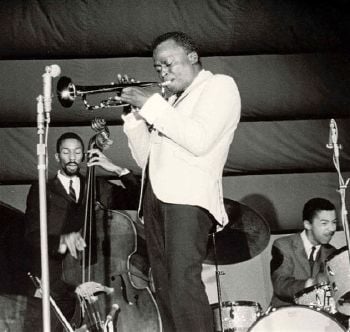
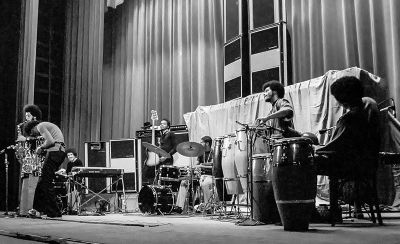
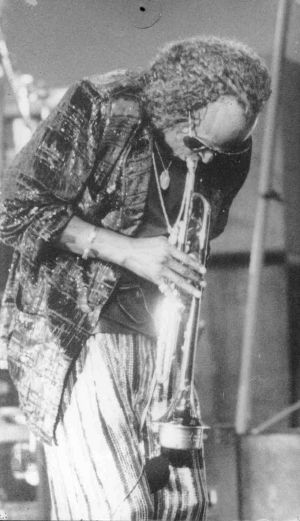
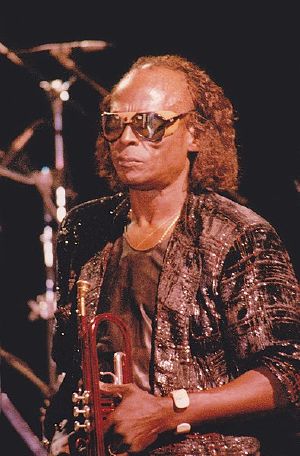
 KSF
KSF